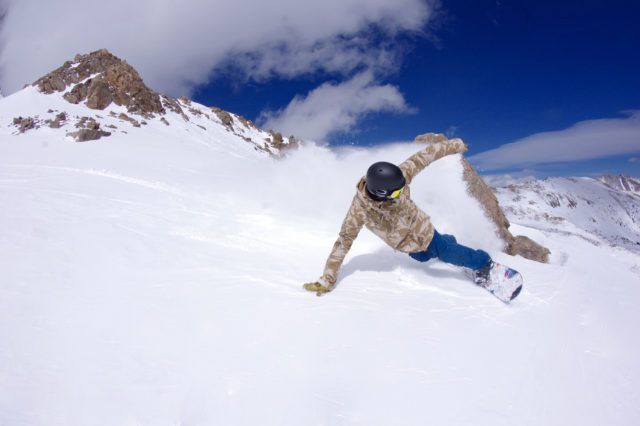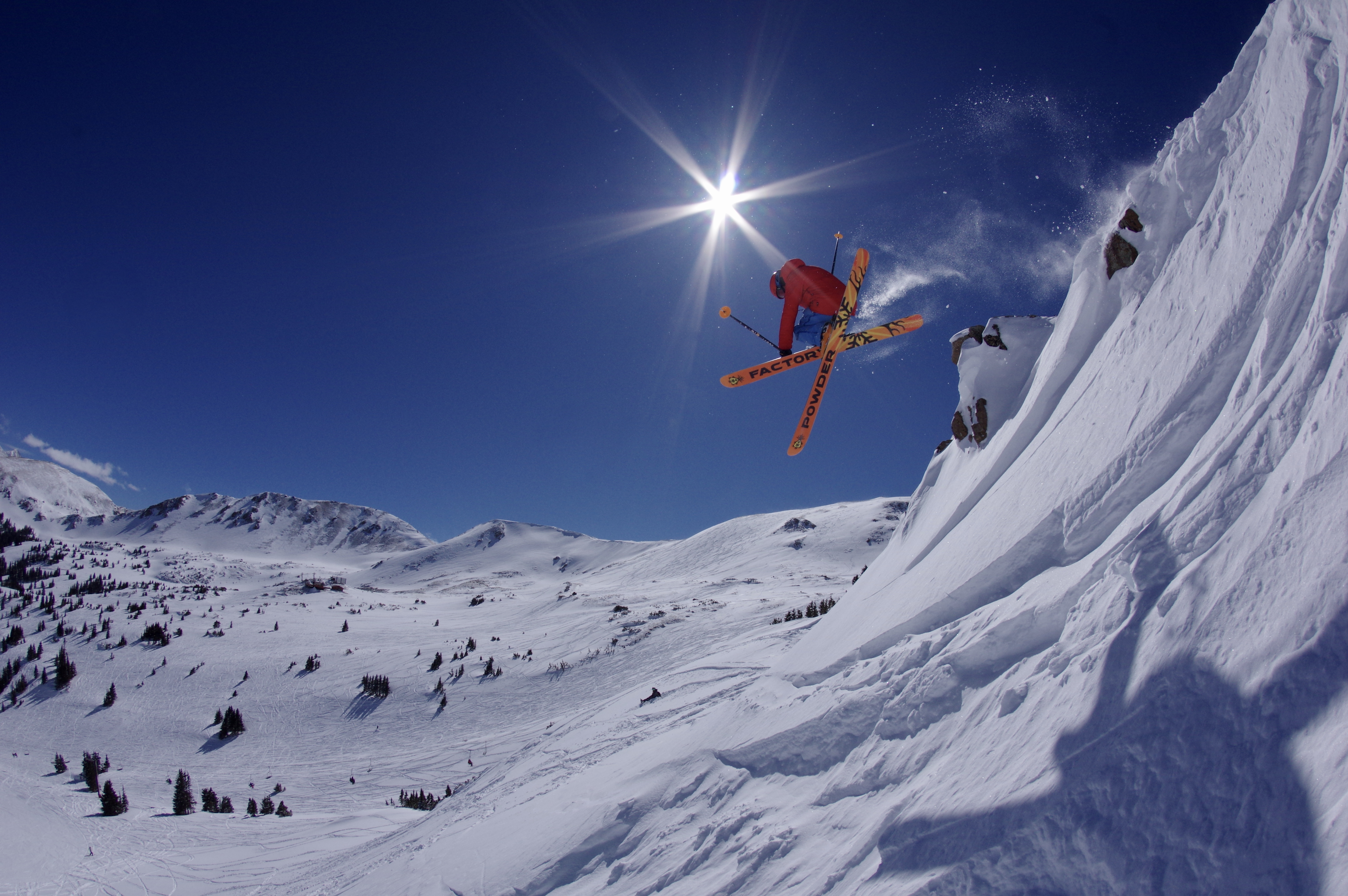
Each year we can’t help but cross our fingers and pray to the snow gods for a ski season full of endless powder days. Yet despite how hard we wish for snow, we must face the reality that we can’t ski a melted glacier. Climate change is taking its toll on our favorite winter activities like skiing and snowboarding.
Glaciers around the world continue to shrink. Boulder County is home to the 1,000-year-old Arikaree Glacier, which has been thinning by one meter per year over the past 15 years. According to scientists, it will disappear completely in about 25 years.
Colorado skiers and riders now have shorter ski seasons to enjoy. Each season starts later and ends earlier — Boulder-based climatologists say warmer temperatures have shaved a couple of weeks off the average ski season over the last 20 to 30 years.
Luckily, some of our favorite Colorado resorts are striving to combat the effects of climate change on the winter season. Aspen offsets 100 percent of its electricity through renewable resources and uses trail-grooming vehicles that run on biodiesel. Vail Resorts follows a sustainability commitment, which calls for having zero operating impact on forests and habitats, and includes a goal to have zero net emissions and send zero waste to the landfill by 2030.
While resorts are taking the right steps to preserve our winters, skiers and riders must also prioritize a dedication to the environment if they want to keep enjoying their favorite winter sports.
Choosing the most eco-friendly resorts is a great way to reduce your carbon footprint when hitting the slopes. But there are other, less obvious ways to minimize your impact on the environment.
Take the very skis and boards we ride, for example. Going green can be as simple as picking the right equipment. There are several Colorado companies that make eco-friendly skis and snowboards from recycled and natural materials.
Liberty Skis uses sustainably harvested bamboo in all of its skis. Not only is bamboo light and resilient, but it can also be harvested without killing the entire plant. The roots that remain after the harvest help control erosion and ensure that the forest canopy remains intact.
Venture Snowboards is another company dedicated to producing sustainable gear. Not only does the company power its factory with renewable energy, but it also chooses environmentally friendly materials for board production. For example, the top sheets of its boards are made from plastic containing castor bean oil, rather than petroleum. Venture also makes an effort to source all of its raw materials as close to home as possible in order to cut down on the resources used in transportation.
“Throughout the whole process, from the conception of the product to the manufacturing, we are trying to do what we can,” says Lisa Branner, Venture co-owner.
But being environmentally friendly doesn’t end with the skis and boards we choose.

Hardcore skiers and riders know the importance of regular tunings when it comes to sliding fast on the slopes. But very few people realize the environmental damage a routine waxing can cause. In order to repel water and keep skis riding as fast as possible, most ski waxes contain perfluorochemicals (PFCs). These chemicals contain toxins that build up in our bloodstreams and groundwater supply. Not only do they increase the risk of cancer and cardiovascular disease in wax technicians, but they never biodegrade. When summer comes around, the snow that melts and runs back into our water supply contains all the PFCs from yet another ski season.
These days, skiers and riders have choices when it comes to wax. Purl, a company founded right off of Pearl Street in 1999, specializes in all-natural, biodegradable, non-fluorinated wax, and works hard to raise awareness about eco-friendly waxes.
Purl Wax is a microcrystalline wax with additives like silicon that make for a slicker ride. Not to be confused with the synthetic substance silicone, silicon is a naturally occurring chemical element.
According to co-owner Jill Van Slyke, Purl Wax “can go toe to toe with any of the fluorinated waxes out there.”
Although Van Slyke grew up skiing and even raced in college, she had no clue what type of wax she was using. It wasn’t even something she thought about. Now, she wants skiers to be aware of the ways they can protect the environment while enjoying the sport.
“We’re not necessarily seeing [PFCs] in huge amounts, but every little bit adds up so we need to make a choice,” she says. “To me it should be a simple choice.”
Purl donates 1 percent of its profits to organizations like Protect Our Winters and the Nature Conservancy.
If you aren’t ready to swap out all your gear for more eco-friendly alternatives, there are plenty of other ways to make skiing and riding gentler on the environment. Choose snow sports gear that is made in the U.S., carpool or ride buses to the mountains and take advantage of resort recycling programs.
Branner has more advice for winter enthusiasts.
“Go to the backcountry,” she says. “That is human-powered recreation, where you’re burning your own energy rather than sitting on a chairlift.”
The products and practices may change, but hopefully we’ll be sliding on snow for years to come.














